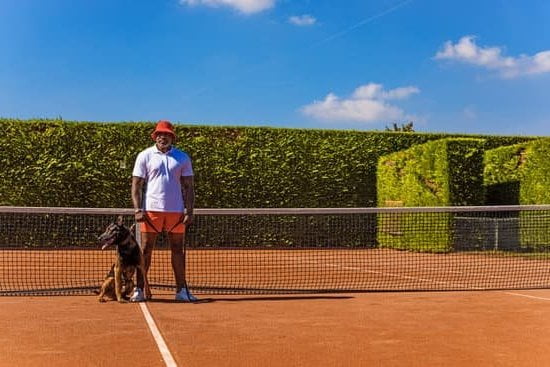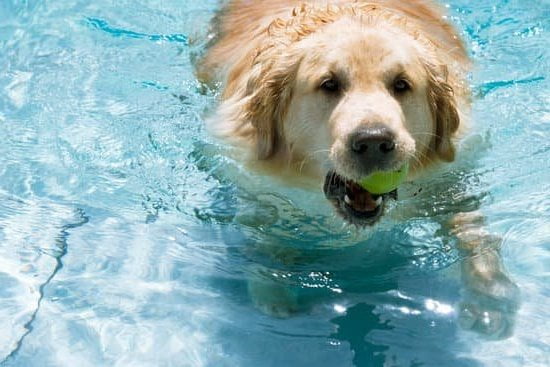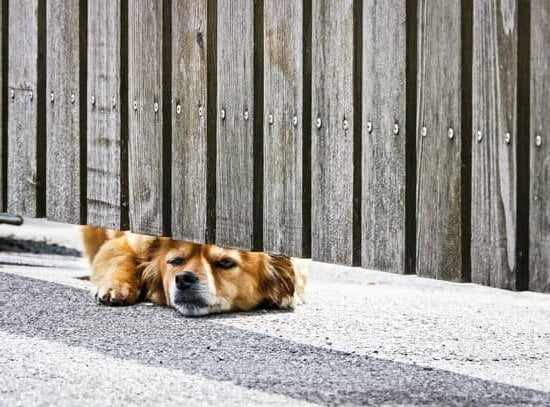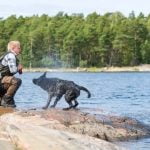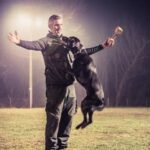Are you wondering how to train a dog to not be dog aggressive? Understanding the root causes of dog aggression and learning how to recognize it is the first step in addressing this issue. From there, training basics involving trust and communication, socialization with other dogs, behavior modification techniques, establishing leadership and boundaries, and seeking professional help when needed are all important aspects in effectively training a dog to not be dog aggressive.
Dog aggression can stem from various factors such as fear, lack of socialization, or even genetics. Recognizing the signs of aggression in your dog is crucial for addressing the issue before it escalates. Once you understand what triggers your dog’s aggression, you can begin implementing training techniques to modify their behavior.
Establishing trust and clear communication with your dog is fundamental for any kind of training. This involves positive reinforcement, setting boundaries, and showing leadership in a way that builds confidence and reduces anxiety. Socialization with other dogs in a controlled environment can also play a significant role in desensitizing your dog to stimuli that provoke aggressive behavior.
By utilizing these training basics along with the right tools and techniques, owners can successfully help their dogs overcome aggression towards other dogs. Seeking professional help may also be necessary in some cases where the aggression is severe or difficult to manage on your own. Consistent maintenance and ongoing training will ensure long-term success in managing and improving your dog’s behavior.
Training Basics
Building Trust
One of the foundational elements of training a dog to not be dog aggressive is establishing trust. This begins with consistent, positive interactions with your dog. Building trust involves providing a safe and secure environment, meeting their physical and emotional needs, and using positive reinforcement techniques. By creating a strong bond based on trust, you can effectively communicate with your dog and encourage them to respond to training.
Effective Communication
Effective communication is key in any successful training program. Dogs rely heavily on body language, tone of voice, and consistent commands to understand what is expected of them. Understanding canine body language can help you recognize signs of potential aggression or anxiety in your dog. Clear and firm communication will help establish boundaries and expectations for your dog’s behavior.
Consistency in Training
Consistency is crucial when training a dog to not be dog aggressive. Consistent training methods, rules, and boundaries will help your dog understand what is expected of them. This means ensuring that all family members are on the same page with training techniques and expectations for the dog’s behavior. Additionally, consistency in providing positive reinforcement for desired behaviors will reinforce the trust and communication established with your dog.
Socialization
Gradual Introductions
When socializing an aggressive dog, it’s important to start with gradual introductions to other dogs. This can involve starting with one-on-one interactions with a calm and well-behaved dog before progressing to group settings. Always monitor the interactions closely and be prepared to intervene if necessary.
Positive Reinforcement
Using positive reinforcement during socialization can help your dog associate pleasant experiences with being around other dogs. Rewarding calm and non-reactive behavior will reinforce the idea that interacting with other dogs is a positive experience.
Professional Guidance
If you’re unsure about how to safely socialize your dog, consider seeking the guidance of a professional dog trainer or behaviorist. They can provide valuable insight and support, ensuring that the process is conducted in a way that is beneficial for your dog’s specific needs.
By gradually exposing your dog to other dogs in a controlled setting, using positive reinforcement, and seeking professional help when needed, you can effectively work towards reducing their aggression towards other animals. Socialization is an ongoing process, so consistency and patience are key for long-term success.
Behavior Modification Techniques
When dealing with dog aggression, behavior modification techniques play a crucial role in training your dog. Positive reinforcement is a technique that involves rewarding your dog for exhibiting the desired behavior. This could include giving treats, verbal praise, or toys as a reward for good behavior. By using positive reinforcement, you are encouraging your dog to repeat the behavior in the future.
Desensitization is another important technique when training a dog to not be aggressive towards other dogs. This involves gradually exposing your dog to the source of their aggression in a controlled and safe manner. For example, if your dog becomes aggressive when seeing other dogs on walks, desensitization could involve starting at a distance where your dog does not react aggressively and then slowly decreasing that distance over time as they become more comfortable.
In implementing these behavior modification techniques, it is important to be patient and consistent. Dog training takes time and effort, so it’s essential to remain committed to the process. Always remember that every dog is different, so what works for one may not work for another. If you find yourself struggling with these techniques, seeking the help of a professional trainer or behaviorist can provide valuable guidance and support for both you and your furry companion.
| Technique | Description |
|---|---|
| Positive Reinforcement | Rewarding good behavior with treats, praise, or toys to encourage repetition. |
| Desensitization | Gradually exposing the dog to the source of aggression in a controlled manner to reduce reactivity. |
| Patient & Consistent Training | Dog training requires dedication and consistency from the owner for effective results. |
Leadership and Boundaries
Establishing yourself as the pack leader is crucial when training a dog to not be dog aggressive. Dogs are pack animals, and they look to their owner for guidance and leadership. By establishing yourself as the alpha, you can help your dog feel secure and less anxious around other dogs.
One way to establish yourself as the pack leader is by setting rules and boundaries for your dog. This can include simple commands such as sit, stay, and come, and ensuring that your dog follows these commands consistently. Consistency is key when setting boundaries, as it helps your dog understand what is expected of them.
Another important aspect of leadership and boundaries is maintaining a calm and assertive energy around your dog. Dogs can pick up on their owner’s emotions, so it’s crucial to remain calm and confident in various situations. By portraying a sense of control, you can help to alleviate any anxiety or aggression that your dog may be feeling.
By establishing clear leadership and boundaries with your dog, you can work towards overcoming their aggression towards other dogs. Remember that training takes time and patience, but with consistent reinforcement and positive reinforcement techniques, you can help your dog learn to coexist peacefully with other dogs.
Training Tools and Techniques
Dog aggression can be a serious problem for many pet owners, but there are several methods and tools that can be used to address this issue. Using leashes, muzzles, and reward-based methods are all effective ways to help train a dog to not be aggressive towards other dogs.
Firstly, using leashes during walks and training sessions can provide better control over your dog’s behavior. This allows you to safely guide your dog away from situations that may trigger aggressive behavior, while also giving you the ability to redirect their attention and focus on you as the owner. Additionally, muzzles can be useful in preventing aggressive behaviors while in potentially stressful situations, such as in a veterinarian’s office or at the dog park.
Reward-based methods are also an essential aspect of training non-aggressive behavior in dogs. Positive reinforcement through treats, praise, and toys when displaying non-aggressive behavior can reinforce good habits while discouraging aggressive actions. It is important to consistently use positive reinforcement during training sessions to ensure that your dog understands what behavior is expected of them.
In addition to these tools and methods, it is crucial to seek professional help when necessary. A professional dog trainer or behaviorist can provide personalized guidance and support for addressing specific aggressive behaviors in your dog. By utilizing these resources, pet owners can effectively train their dogs to not display aggressive tendencies towards other dogs.
| Training Tools | Advantages |
|---|---|
| Leashes | Provide control during walks and training sessions |
| Muzzles | Prevent aggressive behavior in stressful situations |
| Reward-based methods | Promote positive reinforcement for non-aggressive behavior |
Professional Help
Dealing with dog aggression can be a daunting task, and despite your best efforts, you may find that your dog’s behavior does not improve. In cases where the aggression is severe or persistent, it is important to seek the assistance of a professional dog trainer or behaviorist. These individuals have the expertise and experience to work with aggressive dogs and can provide valuable guidance in addressing this issue.
When considering professional help for your dog’s aggression, there are several factors to keep in mind:
- Evaluation: A professional trainer or behaviorist will conduct a thorough evaluation of your dog’s behavior to determine the underlying cause of the aggression. This may involve observing your dog in various situations and environments.
- Customized training plan: Based on their assessment, the trainer will develop a customized training plan tailored to address your dog’s specific issues. This plan may incorporate behavior modification techniques, socialization strategies, and leadership training.
- Support and guidance: Working with a professional provides you with ongoing support and guidance as you navigate through the process of training your dog. They can offer advice on handling challenging situations and adjusting training methods as needed.
Seeking professional help is not an admission of failure but rather a proactive step towards finding a solution for your dog’s aggression. With the expertise of a knowledgeable trainer or behaviorist, you can increase the likelihood of successfully addressing your dog’s aggressive behavior and ultimately improving their quality of life. Remember that every dog is unique, and what works for one may not work for another – so having an expert opinion can make all the difference.
Maintenance and Ongoing Training
Training a dog to not be dog aggressive is an ongoing process that requires consistency and reinforcement for long-term success. Once your dog has made progress in their behavior, it is important to continue reinforcing positive habits to prevent any regression. Here are some key points to consider for maintenance and ongoing training:
- Consistency is key: It’s important to maintain a consistent training routine with your dog. This means continuing to practice obedience commands, socialization, and desensitization exercises regularly.
- Reinforcement of positive behavior: Rewarding your dog for good behavior is essential in maintaining the progress they have made. Whether it’s through treats, praise, or playtime, positive reinforcement will encourage your dog to continue exhibiting non-aggressive behavior.
- Avoiding triggers: Identify potential triggers that may cause your dog to display aggressive behavior and work on avoiding or minimizing exposure to these triggers. This may involve managing their environment and controlling their interactions with other dogs.
By consistently implementing these maintenance techniques, you can help ensure that your dog continues on the path to non-aggressive behavior. Remember that ongoing training is necessary for long-term success and a happy, well-adjusted canine companion.
Case Studies
In conclusion, training a dog to not be dog aggressive is a process that requires patience, consistency, and understanding of your dog’s behavior. The case studies presented in this section serve as proof that with the right training techniques and dedication, dogs can overcome their aggressive behavior towards other dogs. Each success story demonstrates the effectiveness of positive reinforcement, desensitization, and establishing trust and leadership with your dog.
These case studies highlight the importance of recognizing the underlying causes of dog aggression and implementing behavior modification techniques to address them. It is crucial for dog owners to seek professional help when necessary and to continue ongoing training and maintenance to ensure long-term success. By establishing boundaries, leadership, and using the right training tools, such as leashes and muzzles, dog owners can create a safe and controlled environment for their dogs to socialize with other dogs.
It is important for dog owners to remember that every dog is different, and progress may vary. However, with dedication and the right approach, it is possible for dogs to overcome their aggression towards other dogs. The key is to understand your dog’s behavior, address the root causes of their aggression, and consistently reinforce positive behaviors through training. With these strategies in place, dog owners can help their pets become well-adjusted and non-aggressive members of society.
Frequently Asked Questions
How Do I Stop My Dog From Being Dog Aggressive?
If your dog is displaying aggressive behavior towards other dogs, it’s important to address the root cause of the aggression. This may involve consulting with a professional dog trainer or behaviorist who can assess the situation and provide guidance on how to modify your dog’s behavior.
It’s important to create positive experiences for your dog when around other dogs, using methods such as desensitization and counterconditioning.
How Do I Make My Dog Aggressive Dog Friendly?
Making an aggressive dog friendly towards other dogs will require patience, consistency, and positive reinforcement. Slowly introducing your dog to other dogs in controlled environments can help them learn that positive experiences come from interactions with other dogs. Rewarding calm and non-aggressive behavior is key in this process.
What Stops an Aggressive Dog?
There are various interventions that can help stop an aggressive dog from displaying harmful behavior. Proper training, socialization, exercise, and mental stimulation are all important to help address aggression in dogs. Additionally, seeking professional help from a veterinarian or certified animal behaviorist is important in addressing any underlying medical or behavioral issues contributing to the aggression.

Welcome to the blog! I am a professional dog trainer and have been working with dogs for many years. In this blog, I will be discussing various topics related to dog training, including tips, tricks, and advice. I hope you find this information helpful and informative. Thanks for reading!

